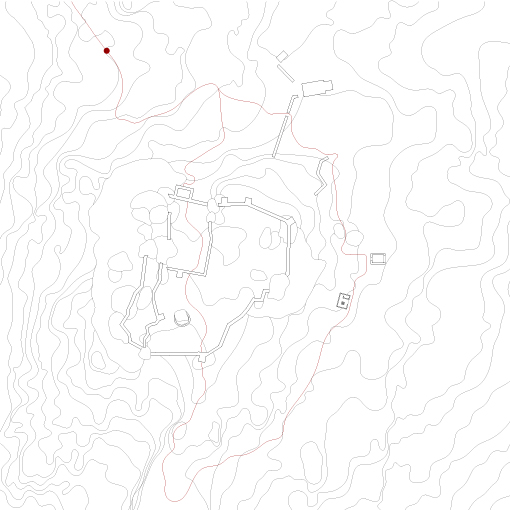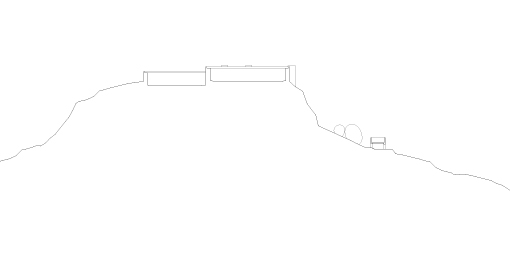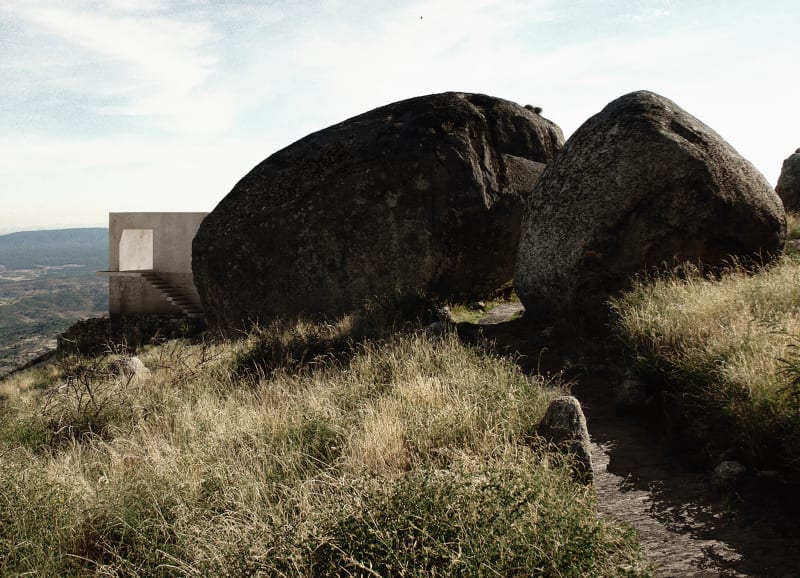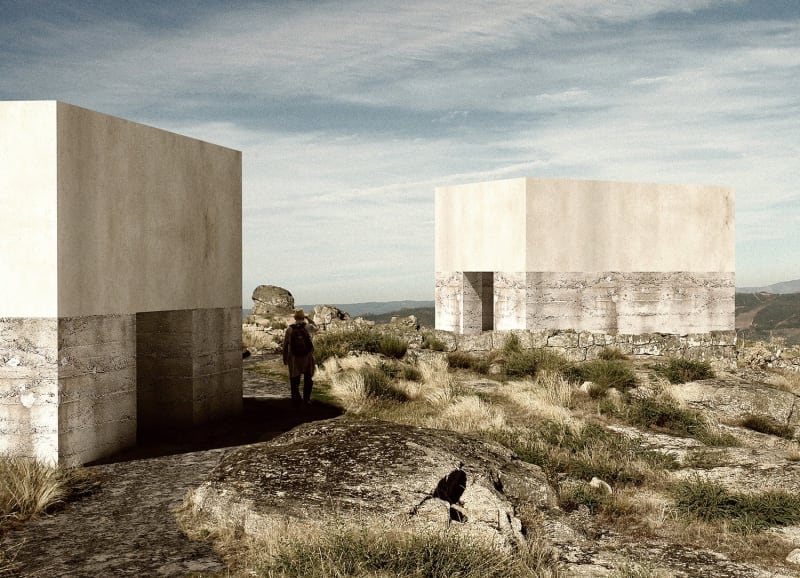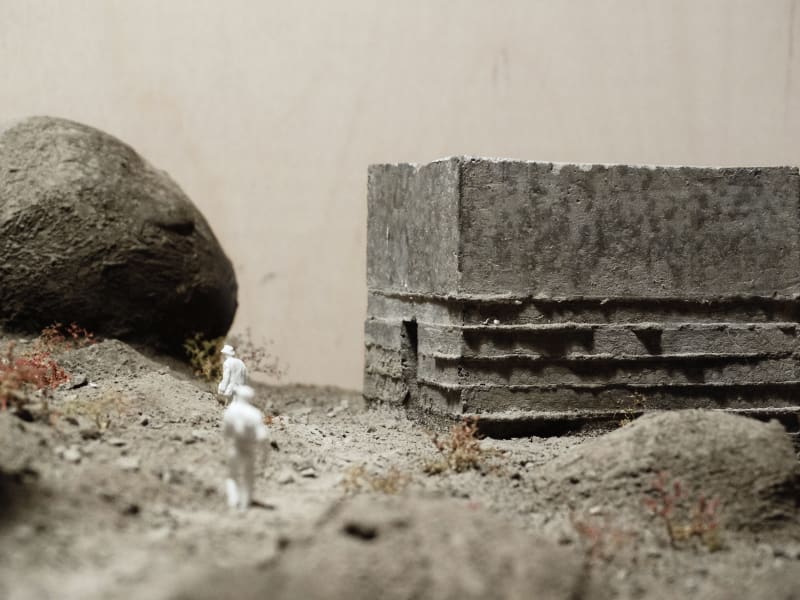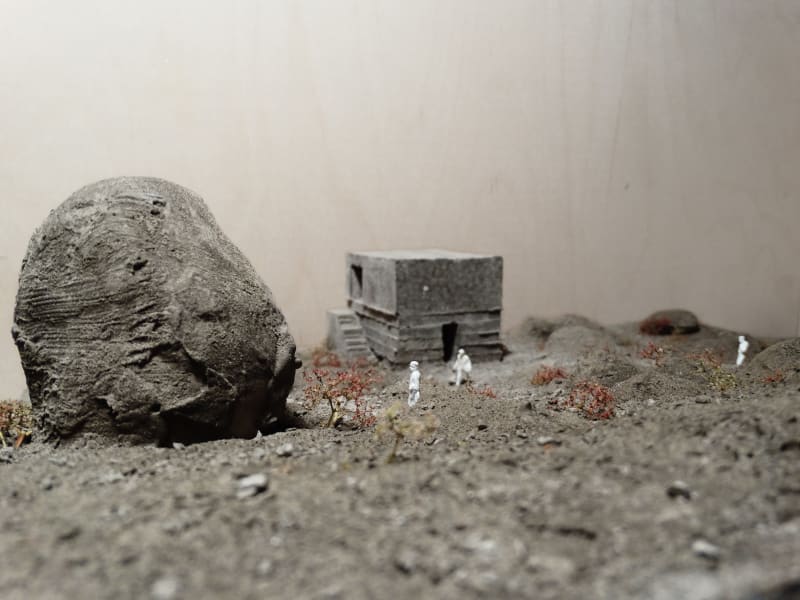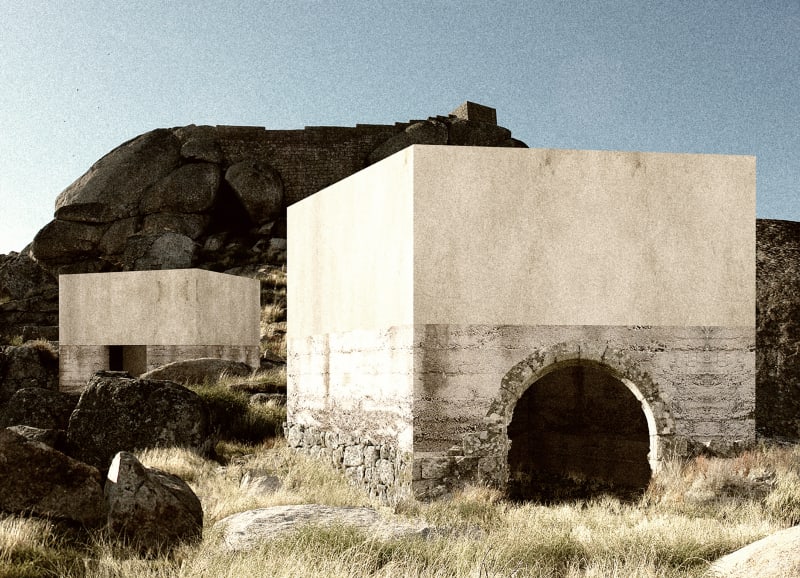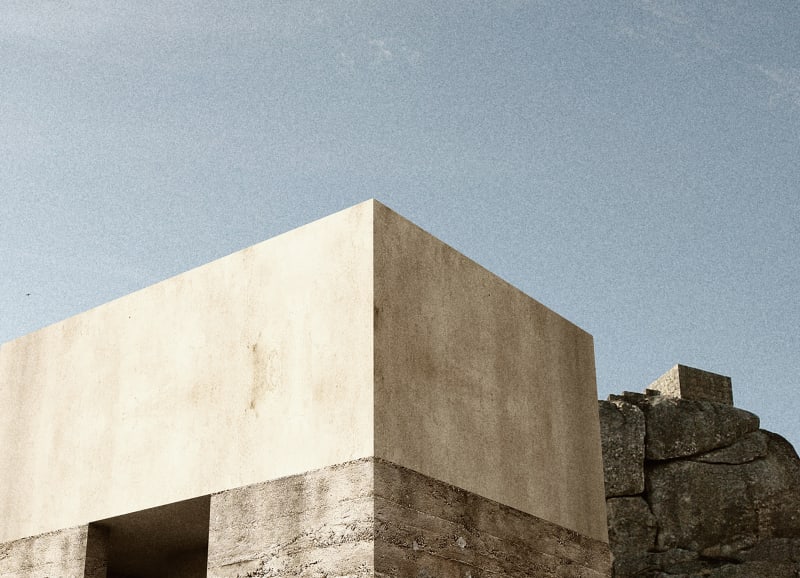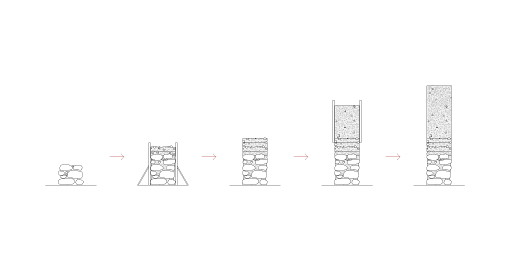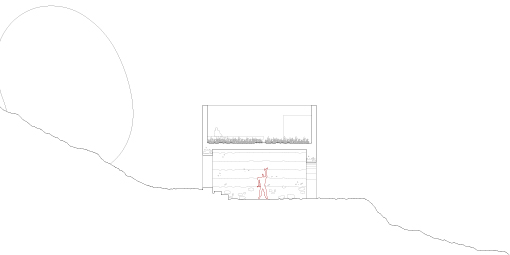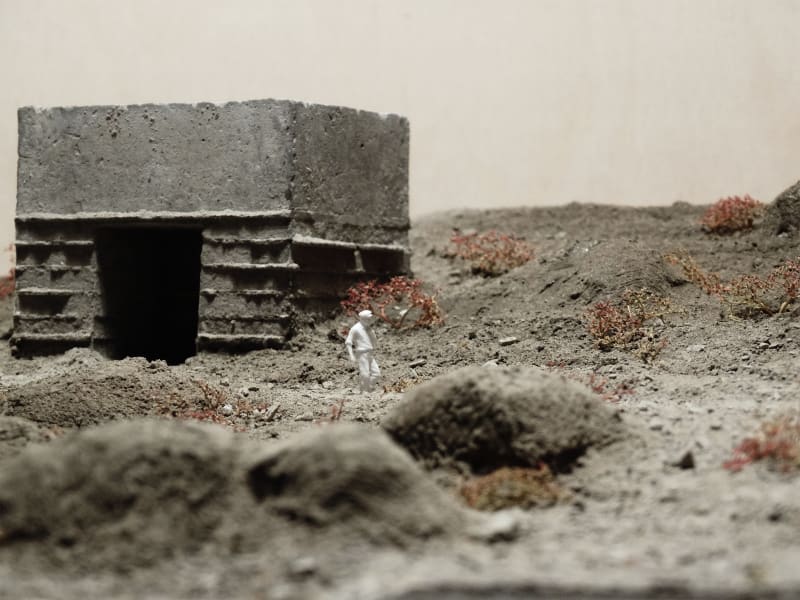Engraved into the slope of a great steep elevation, Monsanto merges with a granite landscape. Known as one of the oldest inhabited places of Portugal, this village fits around behemoth rocks.
Wandering the cobblestone avenues, a visitor may eventually find himself climbing the path to the castle, heading to the remains of a walled fortress on the hilltop. Passing through its third gate and breaking free from its enclosed courtyards, the traveller may take the way to the ruins of St. Michael’s chapel.
Along this path, he may cross a Sanctuary.
Two architectures fail to impose their presence: they bow to nature and they shily reveal to the traveller’s curiosity. Such as a good rest during a pleasant trip, the Sanctuary is intended as the right place for contemplation it has, therefore, no architectural authority over its context. It is designed to meditate.
On the left, the first architecture hides the history of Monsanto and, on the right, the other one, built on the ruins of St. John’s chapel, hides the Inner Sanctum that represents the physical and metaphorical space for self-reflection. The dualism between collective and individual memory of this place is a tool through which the Sanctuary interrogates visitor’s perception.
The path then continues towards the village, passing through two granitic rocks bordering the sacral area.
The body of the chapel is erected on the ruin’s stones in 60 cm thick layers of rammed concrete, whereas the sacred space in the upper floor is built in a smoother concrete, through the use of white cement, whereas the path is thought to be coated with a layer of poured lead, about 2 cm thick.
We tried to tell our idea of Monsanto with the Sanctuary using the words of José Saramago, who first narrated with traveller’s eyes the mystery and the unique atmosphere of that city of stones:
There are places you pass through, there are others you go to. Monsanto is one of those latter ones. The traveller who gets here is looking for stones, the ones no chisel has ever touched, or if it did, it left their brutality intact. The path is steep. Between the last house and the castle walls it’s the almost untouched Kingdom of rocks. As for stones the traveller thought he had already seen everything. Never say that if you’ve not yet been here in Monsanto. It’s wired, there are no houses here, nevertheless he would bet he’s heard some bustle of life, sighs and gasps. The traveller hesitates: will he first head to the castle on his right or to the ruined temple on his left? Now he heads to the castle. Over the rock walls the stones are the mountain’s armour, unbreakable shoulders of the fortress where men just had to lay the walls. He exits the castle, he climbs down to the ruins, he founds many of them. Monsanto finds in the ruins’ framework the place where to raise the Sanctuary. Here no tower has to be built, no hypogeum has to be dug. The stone’s people will identify in the heavy buildings. Until it comes across two building as grey as stones. Along the path the other direction looks over it and invites the traveller to stop over, here he will be able to dismiss his clothes in order to prepare himself to climb first to the memory chamber. The other seems to be more silent and sacred: the ruins of St. John’s chapel. Through a small door you climb down and from the dim light of the arch you can enjoy a magnificent view on the landscape. It hides to Time a sacred space to which you can have access from the outside and where the traveller can stop and meditate. The travel experience is not limited to architecture and stones. The traveller now climbing down to the plane will first meet stones, then houses, then stones again until he will be so far away to turn around and see Monsanto still there, in its solitude, surrounded by wind and silence.

